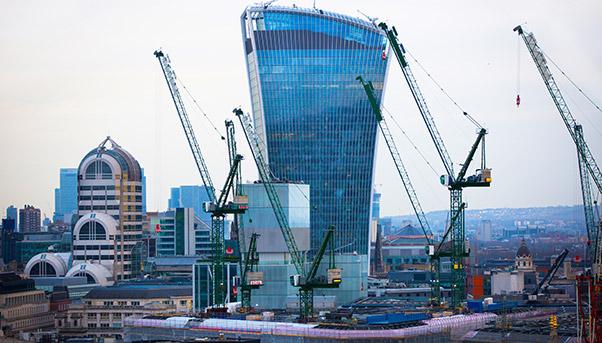
It might be taking longer than other industries, but civil engineering is slowly coming round to the idea of artificial intelligence and the difference it can make on a project.
The industry is taking a long time because it is one of the few in which many of its practices have remained the same for more than a century. The laying of bricks or the pouring of concrete, for instance, are done pretty much the same way as they have been done for as long as these two materials have been around.
«The engineering and construction (E&C) sector is worth more than $10 trillion a year. And while its customers are increasingly sophisticated, it remains severely underdigitized», reads a report published this month by McKinsey & Company, a consultancy. «The E&C industry is investing roughly 1 percent overall into technology – a significantly smaller proportion than other industries, such as financial services and manufacturing», it says. «(E&C) is behind the curve».
A shift in the industry
But McKinsey is optimistic, saying it had noticed a shift.
«Stakeholders across the project lifecycle – including contractors, operators, owners, and service providers – can no longer afford to conceive of AI (artificial intelligence) as technology that’s pertinent only to other industries».
According to its research, companies that were applying AI were showing to be 50% more likely to generate a profit from it.
But AI does not mean robots on a construction site laying bricks or driving trucks. It means the application of algorithms to overcome challenges and improve efficiency and productivity – in other words: to save time and money.
Five applications
McKinsey identifies five applications that could enhance the way engineers and builders work, with each one referring to a different use of AI.
The first is what is known as reinforcement learning, a technique in which algorithms use trial and error to find the best way to do something. This could be used for planning and scheduling, much like how it is done in transport and logistics.
The second is predictive applications to forecast project risks, test the viability and stability of solutions, as well as materials.
The third is supervised learning applications for modularisation and prefabrication, a nascent trend in the industry. «More projects are using off-site construction for large quantities of materials, and the need for enhanced supply chain coordination will become critical to control costs and overall cash flows».

Then there is machine learning, best exemplified by robotic arms that learn from simulations so they can prefabricate materials or do maintenance.
Lastly, there is an application called image recognition. When used with drones and three-dimensional imagery, it can be used for quality control. «These techniques could help engineers compare developing and final products against initial designs, or train an unsafe-behaviors detection algorithm to identify safety risks in project sites based on millions of drone-collected images».
Enhancing BIM
AI can also enhance Building Information Modeling. Known by its acronym, BIM, it is the digital process that follows the life of a project in all of its aspects. McKinsey says AI can use images generated by drones and data gathered by lasers to create models that match those made by BIM for purposes of comparison. «These applications would dramatically reduce decision-making cycles in a construction project from a monthly basis to a daily basis».
Although McKinsey senses a shift in the industry, it says the pace will be slow because companies must first invest in gathering the data required for AI to work.
«Because the impact of AI is contingent on having the right data, E&C leaders cannot take advantage of AI without first undertaking sustained digitization efforts. This includes investing in the right tools and capabilities for data collection and processing, such as cloud infrastructure and advanced analytics.
In the immediate future, we expect AI’s proliferation in the E&C sector to be modest … because few companies have the capabilities to deploy it».

